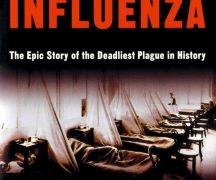After an initial scare from a COVID-19 rapid-response test in the morning, two diagnostic tests on Gov. Mike DeWine came back negative late Thursday evening. A follow-up test Saturday did as well.
For most Ohioans, however, testing scarcity — antigen, antibody and diagnostic (PCR) — has been and continues to be the norm as the new coronavirus continues its march through Ohio and the U.S.
In July, about 22,000 Ohioans were PCR tested daily, on average. Projections the state submitted to the U.S. Department of Health and Human Services in July estimate that number will only reach 24,000 this month.
DeWine, fresh off a scare brought on by the faster, less accurate antigen test used by the White House before Trump’s visit Thursday, said the Ohio Department of Health’s goals testing goals for August are shamefully low.
“When they told me what they were reporting, I said, ‘That’s not acceptable,’” DeWine stated to reporters Friday.
“I said you can send that in, but that’s not what our goal is. Those numbers are simply not acceptable.”
Projections from the Harvard Global Health Institute — based on test positivity, hospitalization rates and other data — estimate Ohio is testing about 63% of the people the researchers estimate is necessary to mitigate the spread of the virus.
With schools set to reopen and a flu season on the horizon, it’s believed that there simply are not tests to meet demand brought on by a national surge in COVID-19 cases.
Ohio’s test positivity rate (the proportion of a batch of tests that come back positive) is 5.3% as of Friday, measured by a seven-day moving average. The World Health Organization advises governments if the figure is greater than 5%, they do not have outbreaks under control.
Increased testing demand brought on by a July case surge slowed down test turnaround times, complicating contact tracing efforts.
Quest Diagnostics, a major private testing lab, said last week its average turnaround time is five days (one day for priority patients). As of July 26, LabCorps, another private lab, is down to two to three days.
Dr. Dustin Calhoun, medical director of emergency management for UC Health, said turnaround time is improving, but the supply chain is fragile. He said in Southwest Ohio, as cases surged, one lab processing machine broke while another was subverted to validate results of a new lab machine. All this added to the delay between test and result.
The slow process causes problems of its own. It’s hard to break the chains of transmission if an asymptomatic, infected person mingles in the community for days before getting a positive result back from the lab.
“Long turnaround times like that certainly hinder a lot of the benefits to the tests,” Calhoun said.
Different ideas are in the works. Ohio partnered with five other states in an “interstate compact” for 3 million antigen tests. DeWine said no contract has been signed.
Antigen tests produce results much faster than diagnostic tests, but are more prone to false positives, as DeWine experienced personally.
“When we deploy an antigen test, we’ve got to think long and hard about how we’re going to deploy it,” he said.
Ohio’s projections to DHHS also indicate an increased focus on serology (antibody) testing, which determines whether one likely had the virus in the past. ODH forecasts 60,000 Ohioans will receive antibody testing in August, compared to 450,000 by December.
“This allows for several important uses of serology testing, such as estimating the spread of COVID-19 much more accurately than the PCR test, determining whether a recovered COVID-19 patient is eligible for plasma donation (the convalescent plasma contains antibodies that can attack the virus and has been shown to help treat severe COVID-19 infection; its investigation as a treatment option currently continues), identifying those healthcare workers and other critical industry workers who can safely return to work,” said Dr. Alexander Sergeev, a professor at the Ohio University’s Department of Social and Public Health.
DeWine said Friday the state is also considering implementing a “pooling” strategy. The idea is to test specimens from a group of people all at once, and if any results come back positive, everyone goes and gets an individual test.
Public health officials believe the strategy allows for broader viral surveillance while conserving resources like lab time, media and reagents.
Beyond simply knowing who’s infected and who is not, testing can be critical to navigating ordinary interactions in an extraordinary pandemic. For instance, a negative PCR test or positive antibody test could indicate it’s safe to visit older friends or family.
Ohio’s guidance for contact sports requires all players, coaches and staff to obtain a negative PCR test result within 72 hours of showing up for a football game, which would require a hefty sum of testing capacity and clearing logistical hurdles.
Explaining the slow pace at which testing has expanded, DeWine emphasized it is a “new” coronavirus requiring an infrastructure of labs and tools built up from scratch. Ohio’s test capacity, he said, has unmistakably increased since early March when Ohio began detecting cases.
Likewise, Ohio avoiding the worst of the national surge means it didn’t receive some federal support places like New York and Florida did.
“The level of our testing needs to go up even more drastically than it already has,” he said.
***
Also from Ohio Capital Journal:
Low-key special election offers test run for November
As voters entered the Bowling Green Church of the Nazarene last week, they were greeted with markings on the ground encouraging distance before checking in at the polls.
A glass covering separated voters from precinct officials. Everyone wore masks. And when the results came back on a slate of local property transfers to other school districts, two ballot issues passed by narrow margins: One to nothing.
Over in Hamilton County, poll workers offered hand sanitizer and organizers encouraged voters to bring their own pens to safely mark their ballots. READ MORE
The Rev. William Barber to Ohio politicians: Refocus policy to address racism, poverty
A prominent civil rights leader and anti-poverty advocate said Friday Ohio legislators need to be focused on passing bills against racism, and refocusing their religious priorities.
In a meeting with media from States Newsroom outlets across the country, the Rev. William Barber said the state and the country need to address “interlocking injustices” in order to face systemic racism and poverty inside and outside the COVID-19 pandemic landscape.
Barber is the co-chair of the national Poor People’s Campaign, president & senior lecturer of the nonprofit Repairers of the Breach and pastor and theologian in North Carolina.
He said social determinants like health care, a living wage and even fair elections are at stake if institutionalized discrimination and stigma is allowed to continue. The problems existed before the COVID-19 pandemic, he said, but persist even more now.
“We are in a situation in this nation…if COVID has done anything, it has exposed what is already there,” Barber said. “Pandemic has exposed and exploited the two great fissures of this society — systemic racism and systemic poverty.” READ MORE





